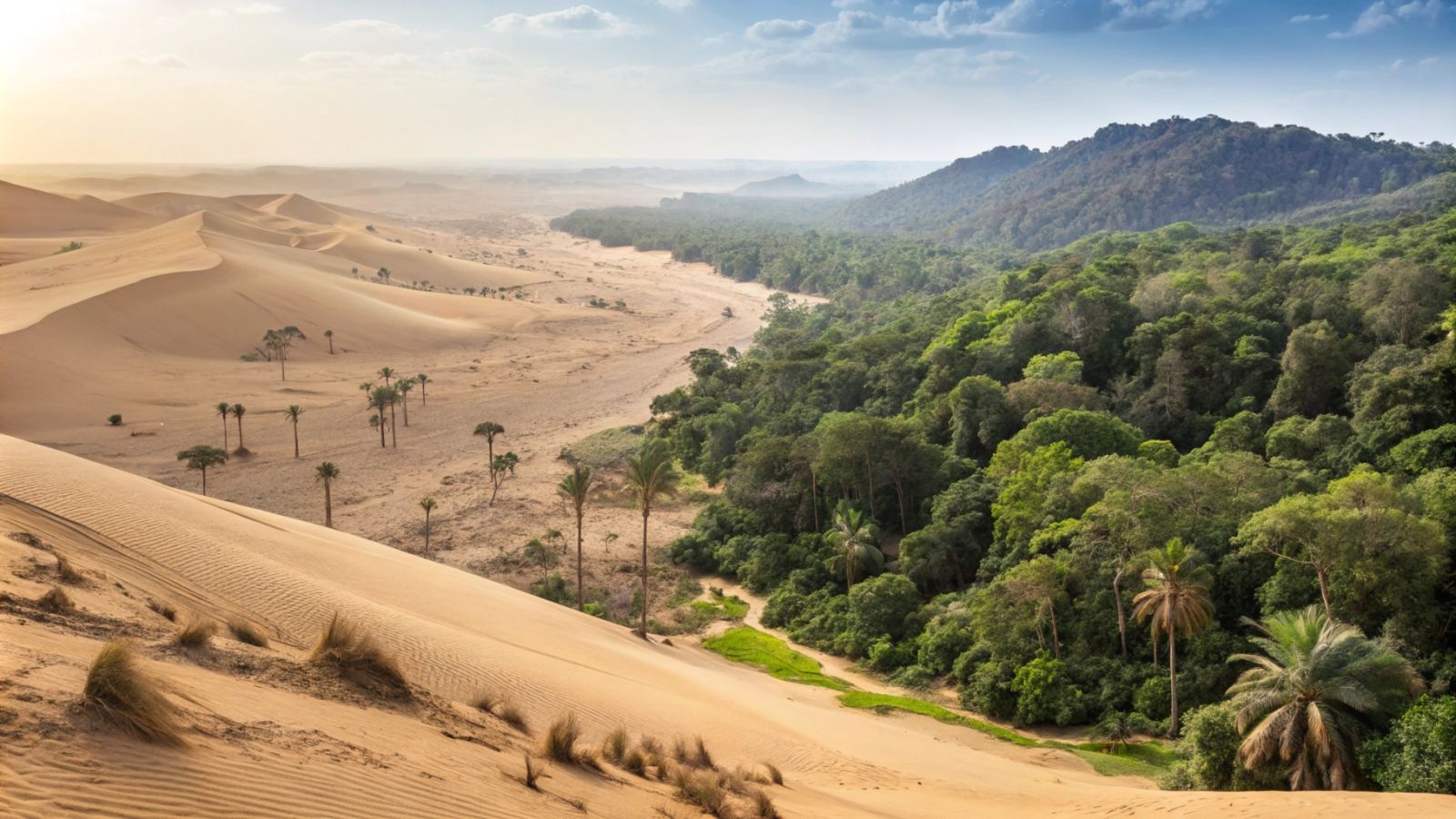The Sahara is greening, and this could (re)shape our climate 🌱
Follow us on Google News (click on ☆)

Between 11,000 and 5,000 years before our era, during the Holocene, changes in Earth's orbit increased the amount of solar radiation during the Northern Hemisphere's summer. This astronomical variation, coupled with intensified monsoons in Africa, created wetter conditions that supported the growth of persistent shrubs in parts of the Sahara.
Recent numerical simulations, published in Climate of the Past, reveal that this greening of the Sahara profoundly influenced the climate of the Northern Hemisphere. Researchers, led by Dr. Marco Gaetani, observed atmospheric changes extending far beyond the African continent.
One of the mechanisms identified involves the shift in the Walker circulation, a system of air loops that governs atmospheric flows in the tropics. This westward shift reorganized jet streams, particularly in the North Atlantic, intensifying their activity in summer and altering their trajectory in winter.
This transformation had diverse climatic effects. Western Europe experienced colder winters and hotter summers, while Central Europe warmed throughout the year. Summers in the Mediterranean basin became drier, whereas Central Asia benefited from increased rainfall.

Comparison of climate models for temperatures and precipitation during the Holocene.
Credit: Climate of the Past (2024). DOI: 10.5194/cp-20-1735-2024
Another critical factor was the reduction in desert dust emissions, which decreased by 80%. With the darker vegetated surface, the Sahara's albedo dropped from 0.30 to 0.15, amplifying tropical warming and enhancing atmospheric water recycling.
This greening not only reshaped the land; it also affected the oceans, influencing oscillations like the North Atlantic Oscillation, known for its role in regulating atmospheric pressure and precipitation across surrounding continents.
Today, researchers are exploring parallels with contemporary changes. Under the effects of climate change, the Sahara appears to be reclaiming areas of greenery. Vegetated corridors are emerging, transforming the ecosystem and offering new opportunities for biodiversity in this long-considered barren region.
These observations bolster the idea of a dynamic Sahara, where complex interactions between climate, vegetation, and human activities continue to shape the future of this desert.